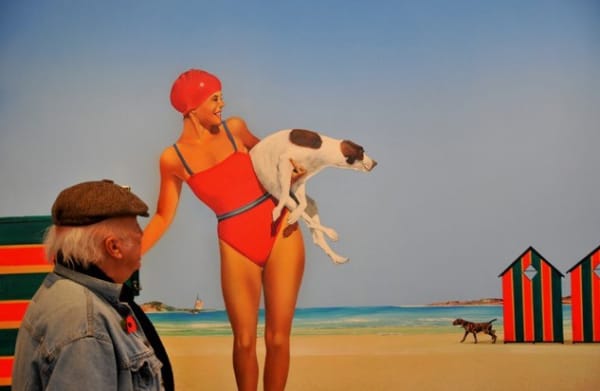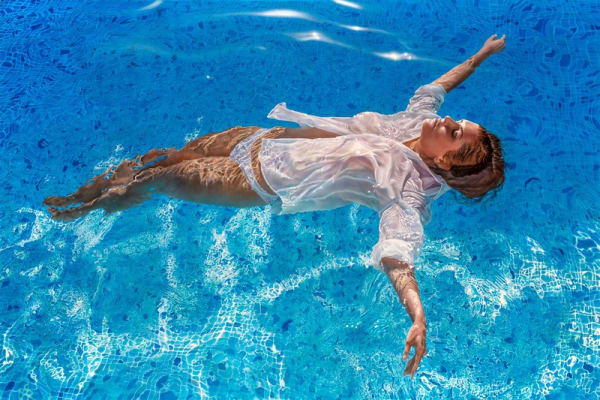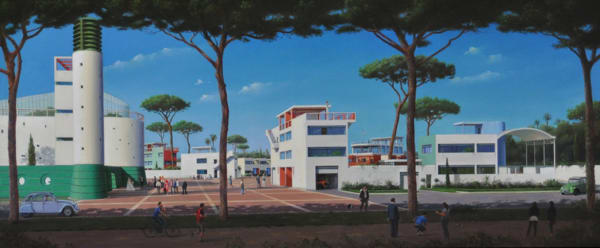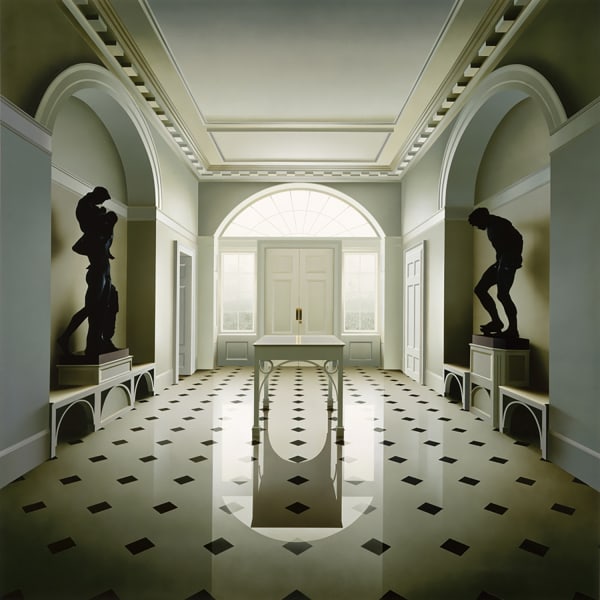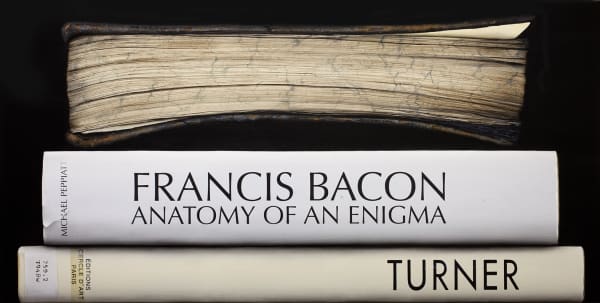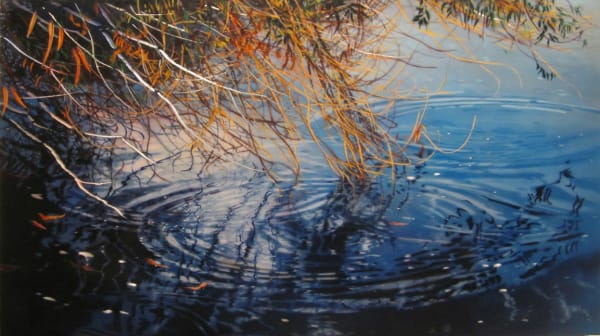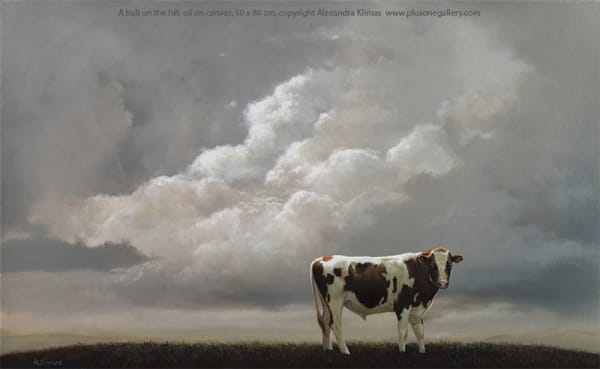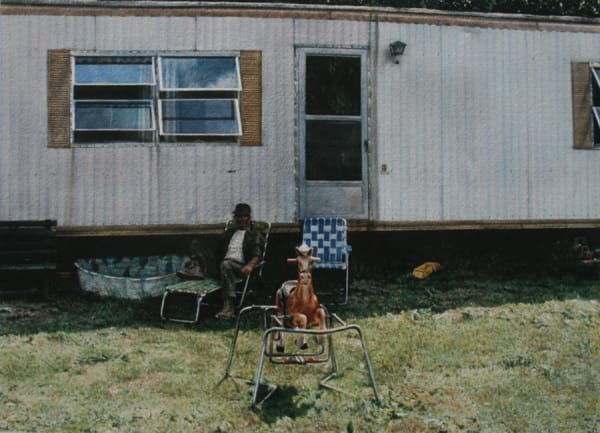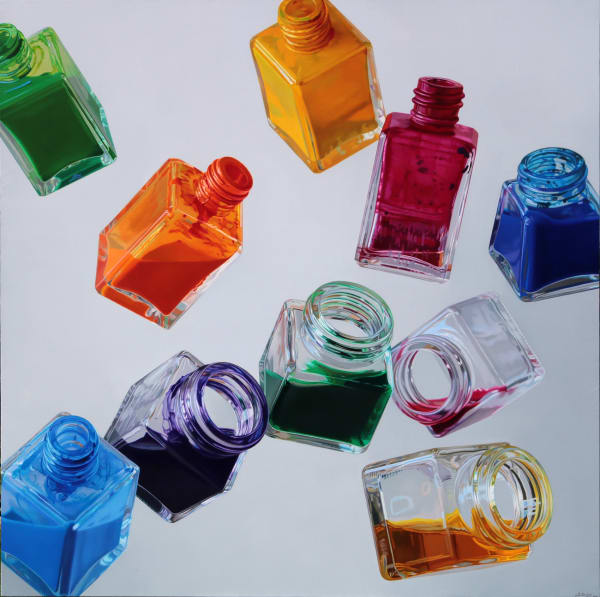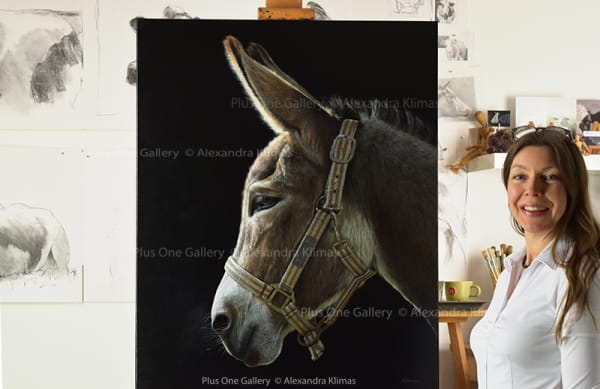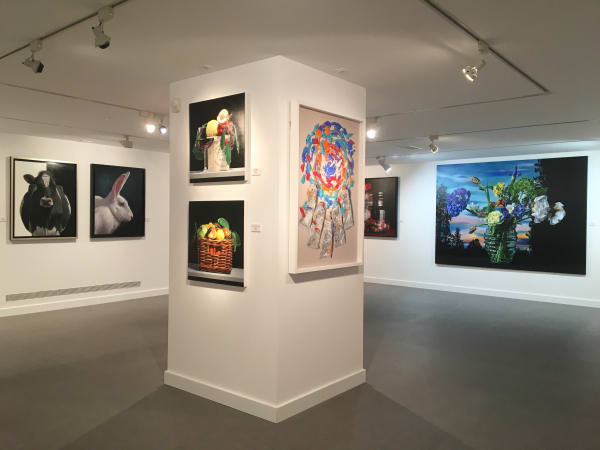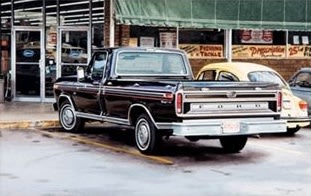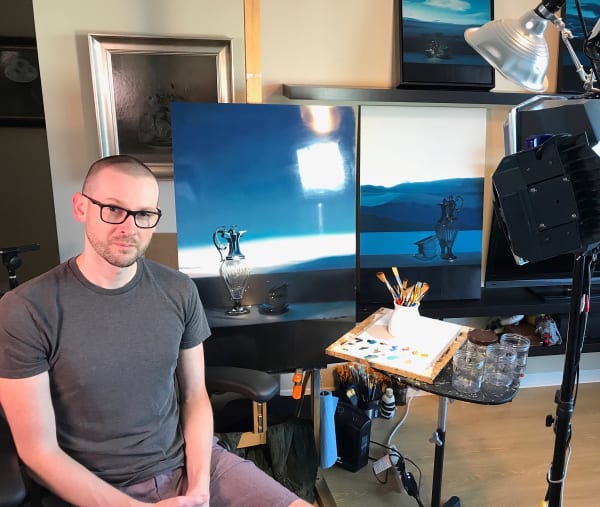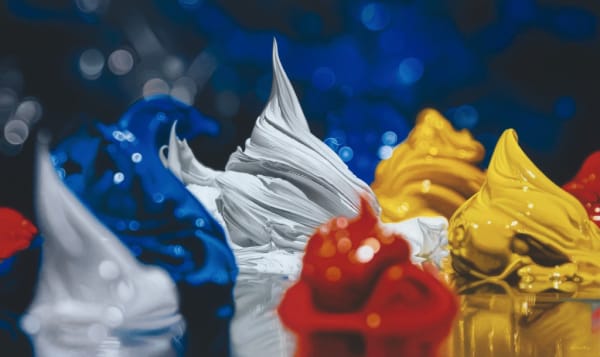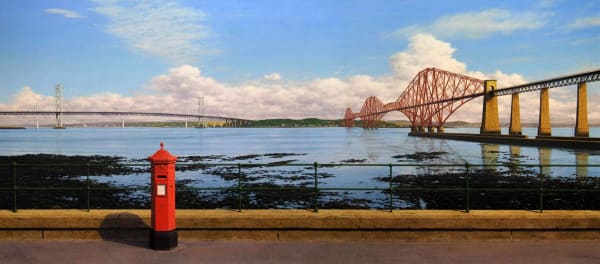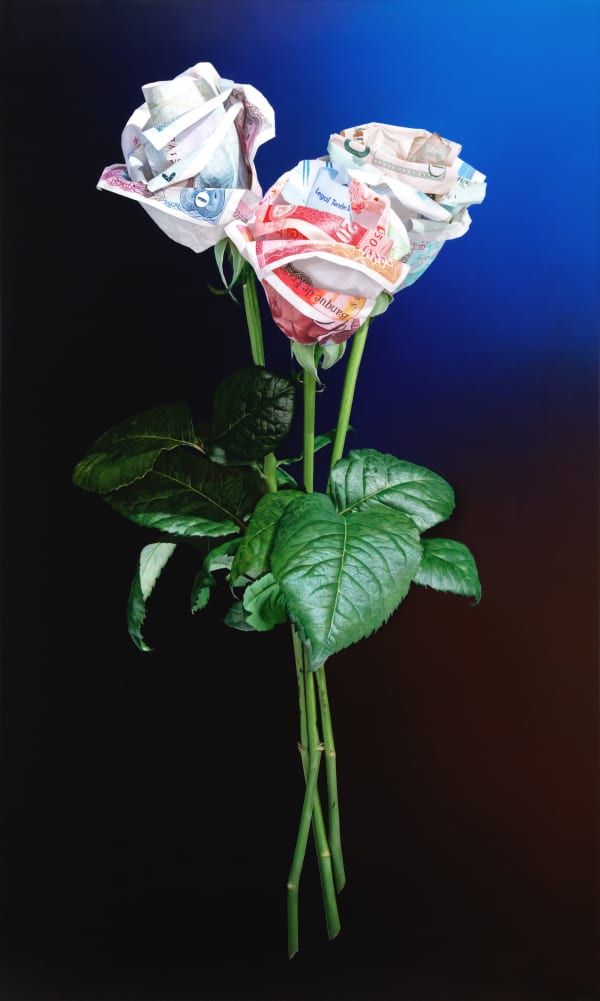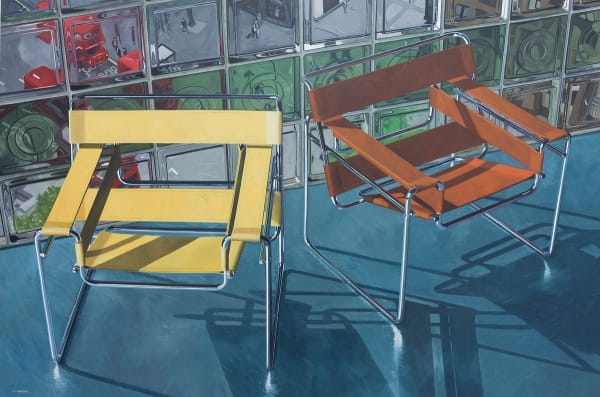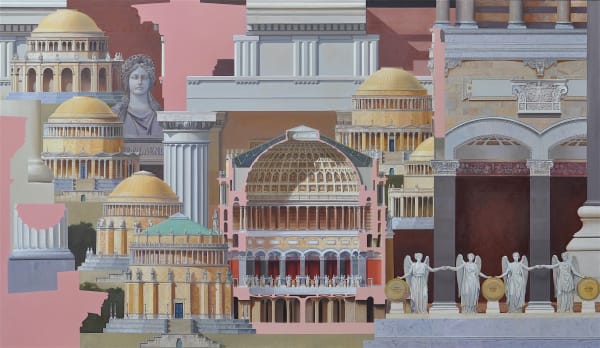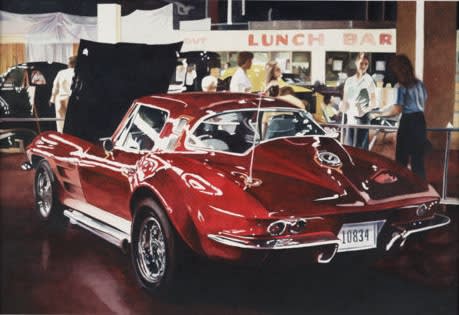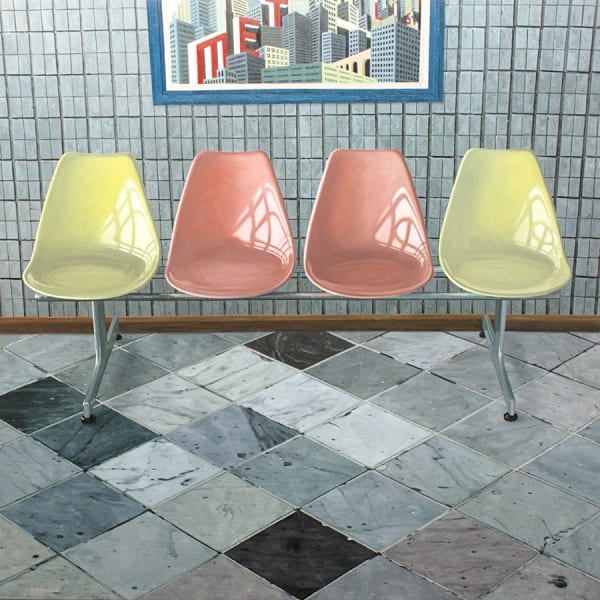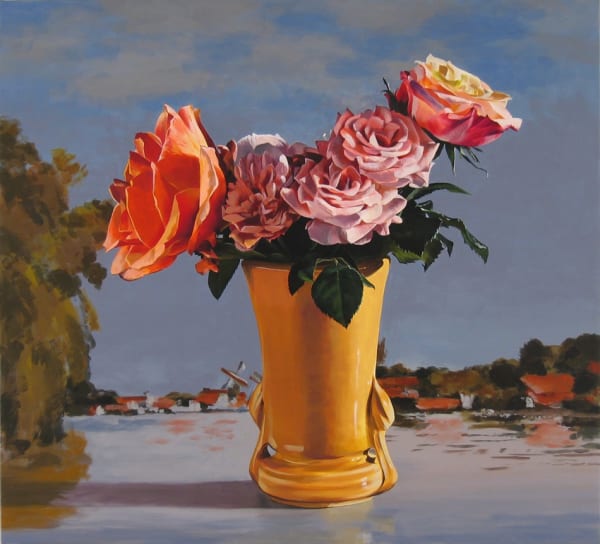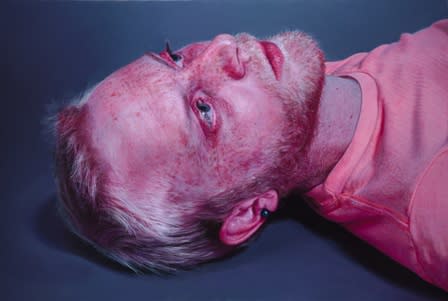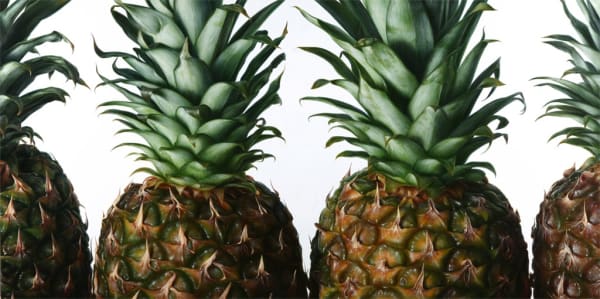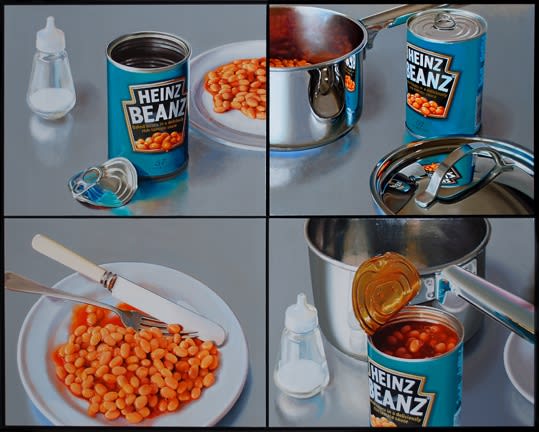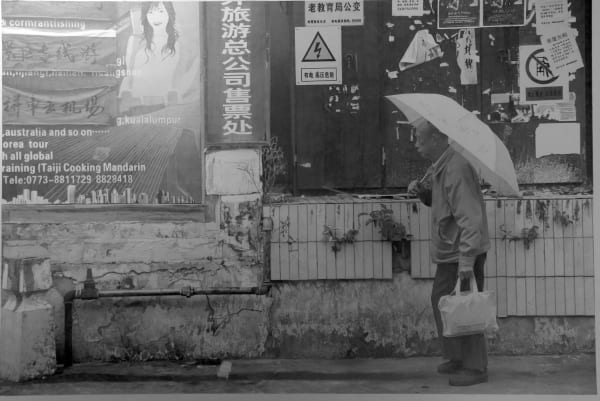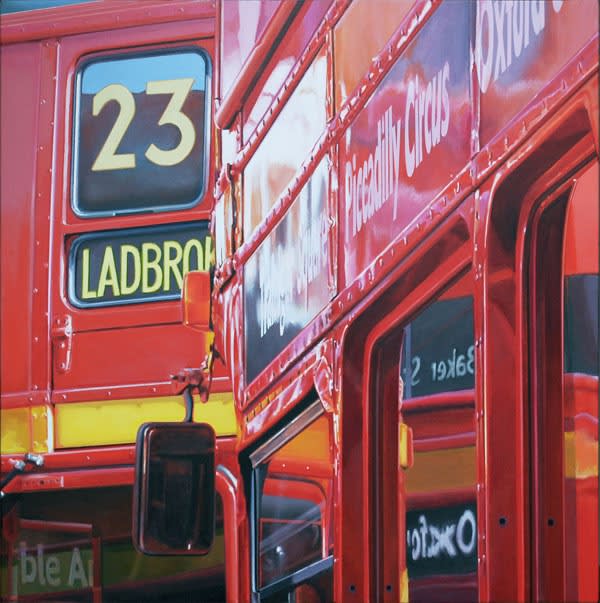Throughout time art has been a medium through which people have documented significant events in history. However, over the years art has evolved and become a method of expression, while photography has replaced painting as the prime means of creating accurate visual records.
In Hyperrealism, the boundary between painting and photography blurs. Hyperrealist paintings are often so similar to high resolution images, making it difficult to recognise the difference between photography and the skilful use of oil and watercolour.
But in a world where high-tech photography and instant photo messaging is available at our fingertips, what does Hyperrealism give us that photography cannot?
HUMAN PRESENCE
Hyperrealist paintings are often accused of being excessively explicit, with so much attention to achieve a perfect rendition of a photograph, it leaves little room for conceptual depth. However, Spanish artist Javier Banegas uses a suggestive approach that encourages the viewer to reconsider their interpretation of Hyperrealism.
Banegas creates monumental still life paintings of close-up everyday objects, adding discreet human narrative to otherwise photographic compositions. He explores interaction with these items and depicts his subjects in a state affected by human touch - for instance, shavings left behind from somebody sharpening a pencil as seen in Shavings V.
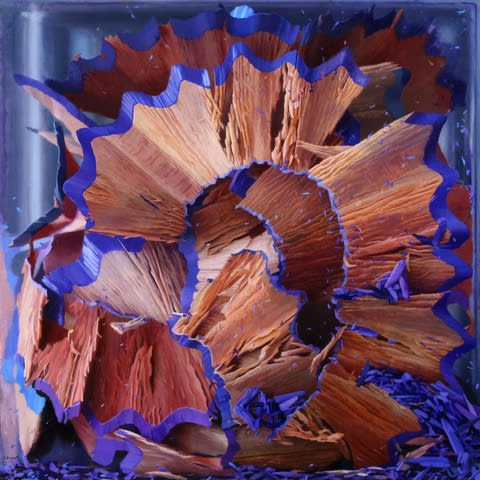
"Shavings V" by Javier Banegas
Just as a photograph would capture an object in a single moment of time, Javier Banegas paints objects, devoid of life, in a period of transition. The subjects of his paintings are inanimate, therefore they are not suspended in life, but are instead captured after action. This gives the impression that someone, somewhere is not quite finished, adding a narrative quality that enables the viewer to create their own stories behind each painting.
The presence of human interaction is present in all of his works and denotes a passing of time, giving us more than a photograph ever could.
"In this world of globalised instant images, painting continues to maintain a significant role in recording the permanence of emotion, the footsteps of man through the world that he inhabits and the objects that surround him. I avoid creating the spectacular images in order to create those which encapsulate these areas." - Javier Banegas

"Colours IX" by Javier Banegas
HIDDEN MESSAGES
Hyperrealism allows for a less strict interpretation of images. Many Hyperrealists manipulate photographs to create compositions that emphasise cultural, social or political messages. The subsequent narrative can be immensely meaningful and open to the interpretation of its audience.
Young-Sung Kim, for example, uses his paintings to deliver a visual critique of materialism in society. Kim, born in Seoul, South Korea, uses contrasting subjects to illustrate the difference between the living and material. He concentrates his exploration of life on small creatures including snails, frogs and fish. Many of his paintings, such as his [Nothing, Life, Object] series, feature these creatures resting on man-made objects such as cutlery and drinking glasses.
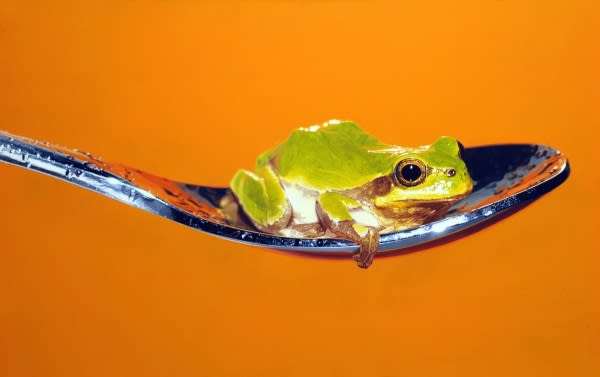
"[Nothing, Life, Object]" by Young-Sung Kim
In a society where ideas and values are increasingly rooted in commerce, Kim’s compositions encourage the viewer to consider the importance of life when it coexists with the material. Kim maintains that the animals in his paintings are representative of today’s society where humans seem to be living happy, stable lives, but are in fact adapting to survive in a confined space that is completely exposed to others.
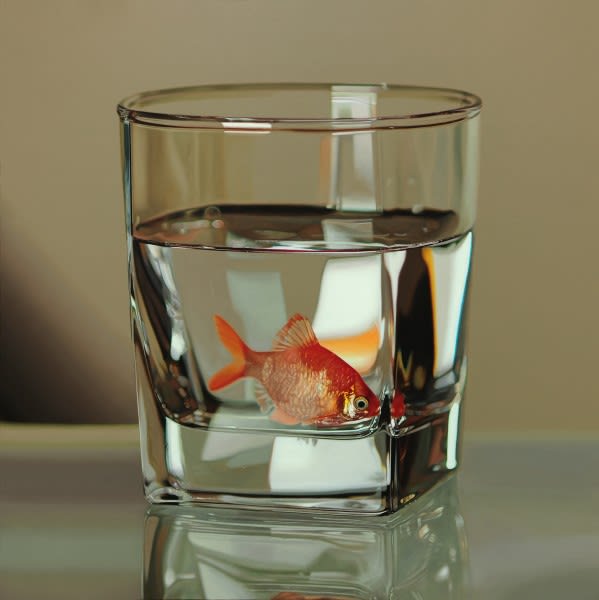
"[Nothing, Life, Object]" by Young-Sung Kim
IMPOSSIBLE IMAGES
Photography allows a viewer to record a specific scene at a particular time, capturing only what is visible to the naked eye. In contrast, Hyperrealists are able to add or remove elements from photographed scenes to add their own unique perspective onto a real image.
Andrew Holmes, for example, takes photographs of automobiles and other metallic objects as subjects for his pieces. He then creates an almost immaculate rendition of the photograph, but in his interpretation, he paints his reflections out of the photographs.
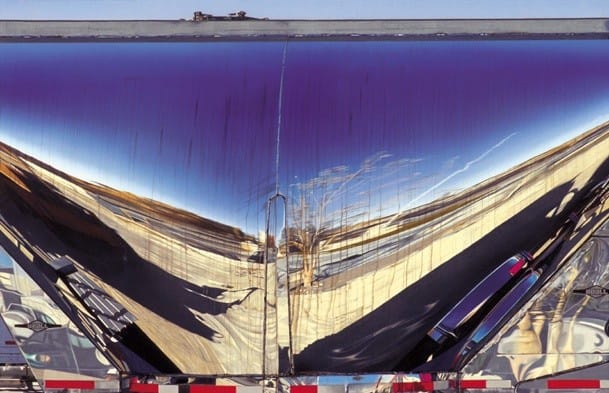
"B" by Andrew Holmes
At once the painted image is spectacular and offers more than a photograph ever could. The painting shows the viewer what one might see in true life due to the skilful hyperrealistic technique, but also, with the absence of human reflection, presents an entirely impossible image.

"L" by Andrew Holmes
Technological advancements in recent years such as photo editing allows for the refinement of photography. However Hyperrealism is able to create a narrative that photography cannot. A photograph will accurately document a moment or an event in time, which does not require the viewer to do anything else but observe. A Hyperrealist painting requires a certain amount of participation from the viewer to see beyond the surface level of what seems like the perfect imitation of a photograph.
To book an appointment or for more information please contact us via email on maggie@plusonegallery.com and maria@plusonegallery.com
or by phone on 020 7730 7656.
or by phone on 020 7730 7656.
Related artists
Share
- X
- Tumblr
Add a comment
-
-
 Blog entries
Blog entriesGood, True and Beautiful Drawings: Paul Cadden
EF Magazine's latest article on Paul Cadden's work (translated) -
 Blog entries
Blog entriesHyperrealism Today
Article on Hyperrealism written by Maggie Bollaert published on EF Magazine -
 Blog entries
Blog entries7 Questions for Plus One Gallery Founder Maggie Bollaert on Why She’s Heralding the Next Generation of Hyperrealist Artists - Artnet Article
The London-based gallery has championed contemporary figurative art since 2001 -
 Blog entries
Blog entriesArtist in Focus - Mike Francis
1938 - 2023 -
 Blog entries
Blog entriesJohannes Wessmark for American Art Collector
-
 Blog entries
Blog entriesMeet the Photorealists
-
 Blog entries
Blog entriesCarl Laubin - Homage to Le Corbusier’s Pessac
-
 Blog entries
Blog entriesArtist in Focus: Ben Johnson
-
 Blog entries
Blog entriesArtist in Focus: Paul Beliveau
-
 Blog entries
Blog entriesAlexandra Klimas in Landleven Magazine
Alexandra Klimas paints in tribute to the animal -
 Blog entries
Blog entriesHAPPY ANNIVERSARY PLUS ONE GALLERY
September 2001 - September 2021 -
 Blog entries
Blog entriesArtist in Focus: David T. Kessler
-
 Blog entries
Blog entriesArtist in Focus: Alexandra Klimas
-
 Blog entries
Blog entriesArtist in Focus: John Salt
-
 Blog entries
Blog entriesFeel Like We’re Living in Surreal Times?
Let These 5 Leading Hyperrealist Artists Ground You -
 Blog entries
Blog entriesAn Interview with Maggie Bollaert
For www.hyperrealism.net -
 Blog entries
Blog entriesArtist in Focus: Andres Castellanos
-
 Blog entries
Blog entriesThe Story Behind the Painting II: Alexandra Klimas
Hope the Donkey -
 Blog entries
Blog entriesCarl Laubin: Elegos
World Trade Centre – Ground Zero -
 Blog entries
Blog entriesArtist in Focus: Adolfo G. Bigioni
-
 Blog entries
Blog entriesThe Story Behind the Painting I: Denis Ryan
-
 Blog entries
Blog entriesArtist in Focus: Young-sung Kim
-
 Blog entries
Blog entriesHiperrealisme | 21 Jun - 30 Sept | Museu del Tabac, Andorra
-
 Blog entries
Blog entriesPlus One Gallery, The Piper Building
-
 Blog entries
Blog entriesPhotorealism of the 1960s
January 10, 2018 -
 Blog entries
Blog entriesThe Tradition of Still Life
November 29, 2017 -
 Blog entries
Blog entriesArtist in Focus: Javier Banegas
November 15, 2017 -
 Blog entries
Blog entriesArtist in Focus: Tom Betts
November 13, 2017 -
 Blog entries
Blog entriesYOUNG-SUNG KIM
October 18, 2017 -
 Blog entries
Blog entriesArtist in Focus: Paul Cadden
August 10, 2017 -
 Blog entries
Blog entriesArtist in Focus: Simon Harling
August 4, 2017 -
 Blog entries
Blog entriesArtist in Focus: Francois Chartier
July 10, 2017 -
 Blog entries
Blog entriesAn Interview with Christian Marsh
June 21, 2017 -
 Blog entries
Blog entriesArtist in Focus: Steve Whitehead
-
 Blog entries
Blog entriesAn Interview with Cynthia Poole
March 30, 2017 -
 Blog entries
Blog entriesAn Interview with Tom Martin
May 24, 2017 -
 Blog entries
Blog entriesArtist in Focus: Cynthina Poole
March 22, 2017 -
 Blog entries
Blog entriesArtist in Focus: Denis Ryan
-
 Blog entries
Blog entriesAn Interview with David Finnigan
-
 Blog entries
Blog entriesArtist in Focus: Simon Hennessey
-
 Blog entries
Blog entriesA Sentimental Journey
Carl Laubin's journey in the creation of his solo show -
 Blog entries
Blog entriesNew Destination on the Grand Tour
RIBA J article written by Hugh Pearman -
 Blog entries
Blog entriesAn Interview with Carl Laubin
November 30, 2016 -
 Blog entries
Blog entriesElena Molinari Interview
Exhibition 'The Alchemy of the Everyday' runs until 19th November November 2nd 2016 -
 Blog entries
Blog entriesReinterpreting the American Dream in Hyperrealism
October 5, 2016 -
 Blog entries
Blog entriesA Trip Down Memory Lane: Nostalgia in Hyperrealism
September 8, 2016 Plus One Gallery examines nostalgia and hyperrealism, looking at vintage iconography, items and period images rendered in hyperrealistic art. -
 Blog entries
Blog entriesArtist in Focus: Thomas Ostenberg
August 25, 2016 A closer look at the work of Thomas Ostenberg, whose sculptures explore the theme of motion and balance, reflecting his personal search for emotional equilibrium. -
 Blog entries
Blog entriesHow is Consumerist Culture Represented in Hyperrealism?
June 29, 2016 Built around imagery of recognisable brands, celebrity cults and everyday life, consumerist art is rooted in the present social context. -
 Blog entries
Blog entriesRelocation to Battersea Reach
June 23, 2016 -
 Blog entries
Blog entriesArtist in Focus: David Finnigan
June 22, 2016 British hyperrealist David Finnigan aims to present a style of realism that is both a progressive and experimental development of that genre. -
 Blog entries
Blog entriesSweet Temptation in Hyperrealism
June 9, 2016 Using a sensuous palette of colours and textures, many hyperrealist artists explore temptation, primal pleasures and how food can comfort the soul. -
 Blog entries
Blog entriesIn Full Bloom: Flowers and their Role in Hyperrealism
May 25, 2016 Hyperrealists are refreshing the still life genre, invigorating paintings of flowers with contemporary techniques that challenge notions of tradition. -
 Blog entries
Blog entriesArtist in Focus: Craig Wylie
May 20, 2016 Craig Wylie has developed a multi-faceted but singular approach to hyperrealism that seizes the appearance of his subjects with tremendous fluency and ease. -
 Blog entries
Blog entriesGallery News: We are relocating!
May 17, 2016 -
 Blog entries
Blog entriesWhy Painting Maintains a Significant Role in a World of Instant Images
May 11, 2016 In a world where high-tech photography and instant photo messaging is available at our fingertips, what does hyperrealism give us that photography cannot? -
 Blog entries
Blog entriesA Taste of your Five-a-Day in Hyperrealism
April 27, 2016 Many hyperrealists explore fruit as a representation the transient nature of life, using colour to remind us of the inevitability of mortality and change. -
 Blog entries
Blog entriesThe Influence of Pop Art in Hyperrealism
April 13, 2016 Hyperrealism is often considered an advancement of Pop Art and Photorealism and first came to prominence at the turn of the millennium. -
 Blog entries
Blog entriesGALLERY NEWS: We are relocating!
April 7, 2016 -
 Blog entries
Blog entriesThe Hyperrealist Travel Guide
March 28, 2016 Urban hyperrealism takes the modern metropolis as its subject. It challenges the artist to explore hidden meanings and diversity deeply rooted in society. -
 Blog entries
Blog entriesArtist in Focus: Cynthia Poole
Examining Consumerism with Nostalgia March 9, 2016 Cynthia Poole’s paintings take food packaging, sweet wrappers and chocolate bars as their subject matter; often with a warm nostalgia for the 1980s confectionery. -
 Blog entries
Blog entriesIs There a Place for Artistic Interpretation in Hyperrealistic Art?
January 12, 2016 -
 Blog entries
Blog entriesHow Does the Use of Photoshop Affect Hyperrealistic Art?
December 16, 2015 -
 Blog entries
Blog entriesThe difference between Photorealism and Hyperrealism
November 25, 2015 -
 Blog entries
Blog entriesCities in Real Life: Urban Hyperrealism
Plus One Gallery examines the impact of street culture, through urban art, and its effect on artistic expression within hyper realism pieces. -
 Blog entries
Blog entriesA Brief History of Hyperrealism
August 7, 2015 Plus One Gallery recaps Hyperrealism with a brief look at the historical influences and movements that led to modern day hyper realistic art.
-







